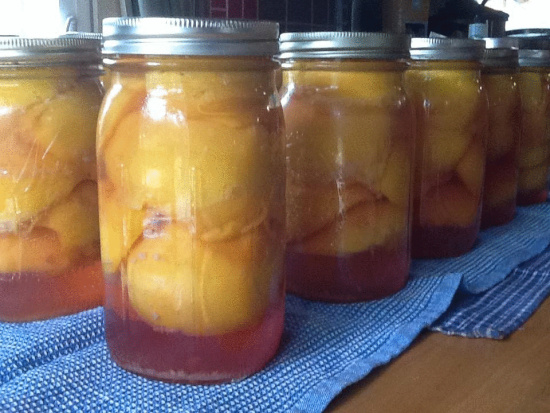Want to learn how to make stuff? build stuff? grow stuff? The Lost Coast Outpost will occasionally be bringing you guest posts from experts in their fields that will give you a bit of information on living sustainably and cultivating old-fashioned skills in a modern way.
Today’s post in our Homesteading Humboldt series is written by Dottie Simmons. She and her husband, Dennis, are the creators of one of our local businesses, Simmon’s Natural Body Care. Their Facebook page is here. Simmons is a Humboldt County Master Food Preserver (MFP) and a trained volunteer through the University of California Cooperative Extension (UCCE.)
Garden to table and beyond…
With vegetable gardens in full swing and fruit ripening on the trees, many of us are preparing to preserve some of this bounty for the future. I have a love affair with the garden that extends to creative cooking year round. To be able to enjoy a burst of flavor from Summer’s harvest in the dreary depths of winter is pure satisfaction. To keep a well-stocked pantry is insurance in case of emergency as well.
Food preservation is the safe maintenance of nutritious food over time. It can be the best way to store leftovers or take food on a picnic, or how to preserve food for long term storage. It covers many methods, from refrigeration to canning, dehydration to fermentation. It’s all about keeping good food from going bad.
Some Food Storage Facts:
Don’t store canned food in jars with the metal rings (bands) still on the lid.
Why? It’s not just so you can use the rings on the next canner load, or to keep them from rusting in place – it’s because the seal can break without you knowing it.
If a food spoils and creates gasses or the seal breaks for another reason, the contents of the jar may be unfit to use.
When the ring is holding the lid in place and the lid comes loose in warmer weather, it may appear to ‘re-seal’ when the temperature cools. This cannot happen when there is no band holding the lid firmly down. A sealed jar is not necessarily a sign of a safe product. It is only an indication that a vacuum has formed. Fill a jar with hot water, put on a lid and let it cool, and it will seal.
The canning process ensures you have killed the molds, yeasts, and bacteria that can spoil the food or make us ill. Fortunately, with simple methods this is easy to do.
Always remember:
• Plan Ahead
• Follow the recipes & times in an up to date book (Any recent Ball canning/freezing book is a good start)
• When in doubt, throw it out. If you think something has gone bad, trust your instinct!
As a Humboldt County Master Food Preserver (MFP) I am a trained volunteer through the University of California Cooperative Extension (UCCE), qualified to answer your questions about food safety and food preservation. You can find Humboldt MFPs at local Farmer’s Markets and other events to answer your questions in person. If you have questions about the different ways to safely can, freeze, dry, ferment or otherwise put away food for the winter? We will do our best to answer them.
Or, if you have questions about food preservation, add them to the comment section and I’ll try to answer them.
If you have any questions about the Master Food Preserver Program contact the Humboldt County Cooperative Extension Office at: 5630 S. Broadway, Eureka, CA 95503, Phone: 707) 444-9334, or online at: http://cehumboldt.ucdavis.edu


CLICK TO MANAGE